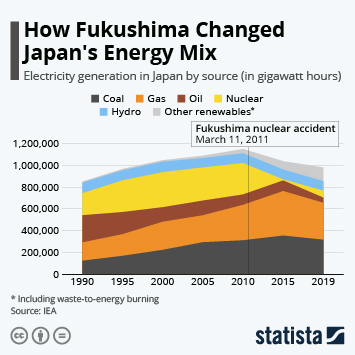According to the Global Energy Monitor, the world’s total nuclear power capacity is currently at 396 gigawatts (GW), with a further 299 GW of capacity underway, whether that’s through nuclear plants that have been announced, or are in the pre-construction or construction phases. The United States is the current leader in nuclear capacity, with 102 GW as of July 2024. It is followed by France (64 GW), China (58 GW), Russia (29 GW), South Korea (27 GW) and Canada (15).
But the status quo is soon to change, with China set to rise to pole position in the coming years. A total of 104 prospective reactors are currently in development across 22 nuclear power plants in the country, accounting for 118 GW of capacity. If they are completed and the present 58 GW of capacity of nuclear reactors remain online, then the country will have 176 GW capacity in total.
Although the U.S. will remain in a high second place, it will trail some way behind, due to only planning to build an additional 7 GW of capacity. This capacity will be over 30 prospective reactors across 8 power plants. If these reactors were to all stay online, it would bring the country’s total to 109 GW. However, there are plans for the Diablo Canyon nuclear power plant to retire its two reactors in 2030, while the Salem nuclear power plant’s reactors are licensed to run until 2036 and 2040. Together, these four reactors being switched off will account for an estimated 5 GW loss. The other two countries with scheduled retirings of reactors shown on this chart are Russia, where five reactors will retire (totalling -4 GW) and one reactor in Ukraine (-1 GW).
The new order, if the prospective nuclear power plants are completed, is expected to stand as follows: China, U.S., France, Russia and India. This chart does not reflect the planned retirements, but the order would remain the same including them. It is worth noting here that new plans could also still be introduced.
After China, India is the country with the most impressive plans for building additional nuclear capacity, with 31 prospective reactors across 9 power plants (or 32 GW of capacity in the pipeline). Other countries committing to building more are Russia (21 GW), the United Kingdom (15 GW), Romania (15 GW) and Turkey (15 GW). Where Poland currently has no nuclear energy, it intends to build plants capable of 14 GW of capacity. Meanwhile, France, a major producer of nuclear energy, will expand capacity by 12 GW and the United States and Iran expect to grow their capacity by 7 GW each.
The other countries that did not currently have nuclear energy as of July 2024 but are planning to build capacity in the future include Turkey (15 GW), Egypt (5 GW), Indonesia (4 GW), Kenya (4 GW), Kazakhstan (3 GW), Bangladesh (2 GW), Uzbekistan (2 GW) and the Philippines (0.04 GW).





















